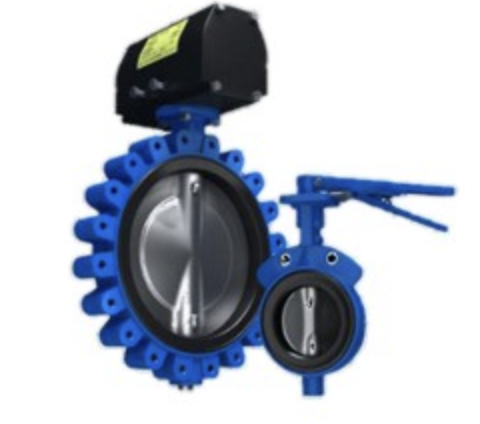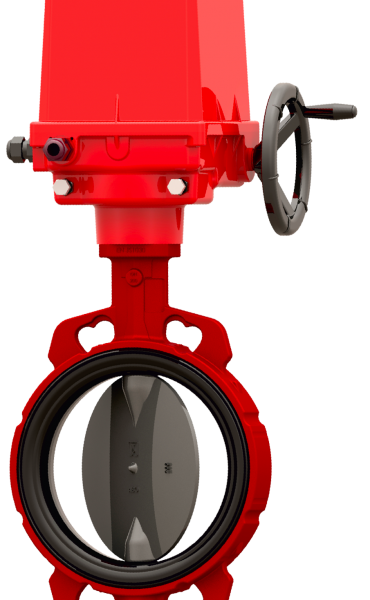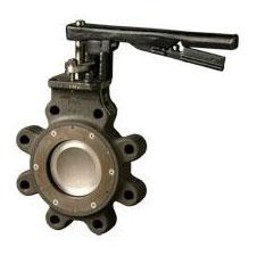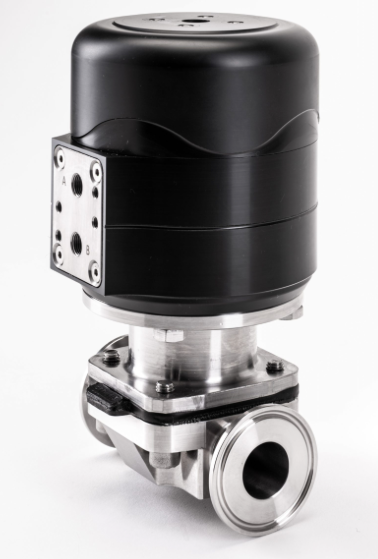Introduction to Keystone Butterfly Valves
Keystone Butterfly Valves are widely used in various industries and applications due to their reliable performance and efficient control of fluid flow. These valves are designed to regulate the flow of liquids or gases by using a disc that rotates on a shaft, allowing for precise control and modulation. In this comprehensive guide, we will explore the inner workings of Keystone Butterfly Valves, their advantages, different types available, factors to consider when choosing them, installation and maintenance procedures, as well as common applications. By the end of this guide, you will have a deep understanding of Keystone Butterfly Valves and be able to choose the right valve for your specific needs.
How do Keystone Butterfly Valves work?
Keystone Butterfly Valves operate on a simple yet effective principle. The valve consists of a disc that is mounted on a shaft, which is positioned perpendicular to the flow of the fluid. When the valve is in the closed position, the disc blocks the flow completely. As the valve is opened, the disc rotates on the shaft, allowing the fluid to pass through the valve. The degree of rotation determines the amount of flow, providing precise control over the process.
One of the key design features of Keystone Butterfly Valves is the disc. This design allows for a low-pressure drop across the valve, minimising energy loss. The disc is also lightweight, resulting in reduced wear on the valve components and enabling the valve to open and close quickly. The shaft that connects the disc to the actuator is located off-centre, providing a “double-offset” or “triple-offset” design, which enhances sealing capabilities and extends the valve’s service life.
Advantages of using Keystone Butterfly Valves
Keystone Butterfly Valves offer numerous advantages that make them a popular choice in various industries. Firstly, their compact design and lightweight construction make them easy to install and handle. This not only saves on space but also reduces installation costs. Additionally, their simple structure and fewer components result in lower maintenance requirements and costs.
Another significant advantage of Keystone Butterfly Valves is their excellent flow control capabilities. The design of the disc and the off-centre shaft allows for precise modulation of the flow, providing accurate control over the process. This makes them ideal for applications that require precise flow regulation, such as in the chemical, pharmaceutical, and food industries.
Furthermore, Keystone Butterfly Valves are highly versatile and can be used with a wide range of fluids, including liquids, gases, and slurries. They can handle large flow rates and high-pressure differentials, making them suitable for demanding applications. The valves also have a low-pressure drop, minimising energy consumption and maximising efficiency.
Types of Keystone Butterfly Valves
Keystone Butterfly Valves come in various types, each designed for specific applications and operating conditions. The most common types include:
Concentric Butterfly Valves: These valves have a disc that is centred within the pipe, providing a more economical option for general-purpose applications with moderate pressure and temperature conditions.
Eccentric Butterfly Valves: In these valves, the disc is offset from the centreline of the pipe, allowing for a bubble-tight shut-off. They are suitable for applications that require tight sealing, such as in the oil and gas industry.
High-Performance Butterfly Valves: These valves are designed to handle high-pressure and high-temperature applications. They have robust construction and advanced sealing mechanisms to ensure reliable performance in demanding conditions.
Lug-Type Butterfly Valves: Lug-type valves have threaded inserts or lugs on the valve body, allowing them to be installed between two flanges without the need for additional hardware. They are commonly used in applications where space is limited.
Wafer Butterfly Valves: Wafer valves are lightweight and have a compact design. They are installed between two flanges using bolts or studs and are suitable for applications with low-pressure and temperature conditions.
Factors to consider when choosing Keystone Butterfly Valves
When selecting a Keystone Butterfly Valve for your specific application, several factors need to be taken into consideration. These include:
Operating Conditions: Consider the temperature, pressure, and flow rate of the fluid to ensure that the valve is compatible with the operating conditions. High-performance valves are recommended for extreme conditions.
Application: Determine the specific purpose of the valve and the nature of the fluid being controlled. Consider factors such as corrosiveness, viscosity, and potential solids content to select the appropriate material and design.
Size: The size of the valve should be based on the pipe diameter and the desired flow rate. It is essential to ensure that the valve size matches the system requirements for optimal performance.
Actuation: Decide on the type of actuation required, such as manual, pneumatic, or electric. Consider factors like accessibility, automation needs, and control system compatibility.
Maintenance: Evaluate the ease of maintenance and availability of spare parts for the selected valve. Opt for valves that are easy to disassemble and service to minimise downtime and maintenance costs.
Installation and maintenance of Keystone Butterfly Valves
Proper installation and regular maintenance are crucial for the optimal performance and longevity of Keystone Butterfly Valves. Here are some essential guidelines to follow:
Installation: Ensure that the valve is installed in the correct orientation, with the flow direction indicated on the valve body aligned with the actual flow. Proper alignment is necessary to prevent leakage and ensure reliable operation.
Sealing: Check the sealing surfaces for any dirt, debris, or damage before assembly. Apply the appropriate sealing material, such as a gasket or O-ring, to ensure a tight seal. Follow the manufacturer’s instructions for torque specifications during assembly.
Operation: Regularly inspect the valve’s operation to detect any signs of wear, leakage, or abnormal functioning. Lubricate the moving parts as recommended to maintain smooth operation and prevent friction-related issues.
Periodic Maintenance: Schedule routine maintenance tasks, such as checking and adjusting actuator settings, inspecting seals and gaskets, and verifying the integrity of the valve body. Follow the manufacturer’s recommendations for maintenance intervals and procedures.
Common applications of Keystone Butterfly Valves
Keystone Butterfly Valves find applications in a wide range of industries and processes. Some common areas where these valves are used include:
Water Treatment: Butterfly valves are commonly employed in water treatment plants for controlling the flow of water and various treatment chemicals. They provide reliable operation and precise flow control.
HVAC Systems: Keystone Butterfly Valves are widely used in heating, ventilation, and air conditioning (HVAC) systems to regulate the flow of air, water, or steam. Their compact design and quick response make them ideal for HVAC applications.
Chemical Industry: In the chemical industry, Keystone Butterfly Valves are used for handling corrosive fluids, acids, and chemicals. They provide excellent sealing capabilities and resist damage from corrosive substances.
Food and Beverage Industry: Butterfly valves are utilized in the food and beverage industry for controlling the flow of liquids, such as water, juices, and dairy products. Their sanitary design and ease of cleaning make them suitable for hygienic applications.
Oil and Gas Industry: In the oil and gas industry, Keystone Butterfly Valves are used in pipelines, refineries, and processing plants. They handle high-pressure and high-temperature conditions and provide reliable shut-off and control.
Choosing the right Keystone Butterfly Valve for your needs
In conclusion, Keystone Butterfly Valves offer a versatile and efficient solution for controlling fluid flow in various industries and applications. Their simple yet robust design, precise flow control, and cost-effective operation make them a popular choice among engineers and operators. By considering factors such as operating conditions, application requirements, and maintenance needs, you can select the right Keystone Butterfly Valve for your specific needs.
Whether it is for water treatment, HVAC systems, the chemical industry, food and beverage applications, or the oil and gas sector, Keystone Butterfly Valves provide reliable performance and optimal flow control. By following proper installation and maintenance procedures, you can ensure the longevity and efficiency of these valves.
Heaps & Partners are your trusted designer & manufacturer of industrial valves and instrumentation equipment. Get in touch with our team of experts today!




